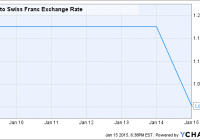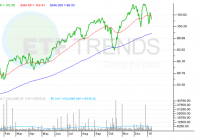The Swiss Remind Us Why You Should Always Own Some Gold
Swiss Franc moves throw a wrech in the global currency picture on Thursday. Gold rallies on the news. We think that some capital should always be allocated to gold. By Thom Lachenmann The overnight news about Switzerland left the markets in a frenzy this morning and were no doubt beacons of both fantastic and horrifying news for FX traders who missed the trade and woke up to mayhem. Switzerland’s central bank stopped pegging the franc to the euro, a move that we really can’t blame them for. In trying to “defend” the Swiss franc, the Swiss national bank had ran up quite a bill. So, they let the dam burst, and burst it did. It was a rule put in place in order to keep the currency from getting too strong, a concept that we find ridiculous to begin with. Currencies, of course, get stronger and weaker based on the overall health of the nation’s macro economy. Limiting the strength of your currency is a dopey thing to do, unless you’re an equity market trader with a full scale bullish position. Switzerland’s tactic of lowering interest rates on the franc while doing this didn’t seem to help at all and the franc skyrocketed to all time highs today. Euro to Swiss Franc Exchange Rate data by YCharts Of course, with the whole world expecting Europe to implement some type of economic stimulus, the Swiss Central Bank could have had a real quagmire on its hands trying to defend its currency if there was a flee from the euro. When countries stimulate the way the ECB could potentially do, it generally causes the currency to devalue in a sharp fashion. We were reminded of the benefits of having some gold in your portfolio today, as well. The commodity was up nearly 2% on Thursday after the Swiss news hit the wires. We think there’s a couple reasons that gold got the boost. First, obviously, people that are having “flights to safety,” as Reuters called it, are simply getting into the precious metal as a portfolio hedge or as a safe haven for capital. Secondly, we believe that the notion of Switzerland unpinning their currency from a major national bank reminds people about the true value of gold, when looked at as a non-recurring resource. Gold is held in reserves by these types of central banks for these reasons, and today’s move by the Swiss shows that not ALL countries have drifted into the “Keynesian Dream” that the US, China, and ECB are in. Swiss equities were crushed, down 11% when U.S. markets opened on Thursday morning. When countries take the “unpopular” but safe moves of thinking Austrian, gold flourishes. This type of move is a nice subtle reminder to note when we’re always going to think of gold as a great safe haven for investors and something that a well balanced investor should always allocate some portion of their capital too, whether it’s through funds or the physical commodity.

